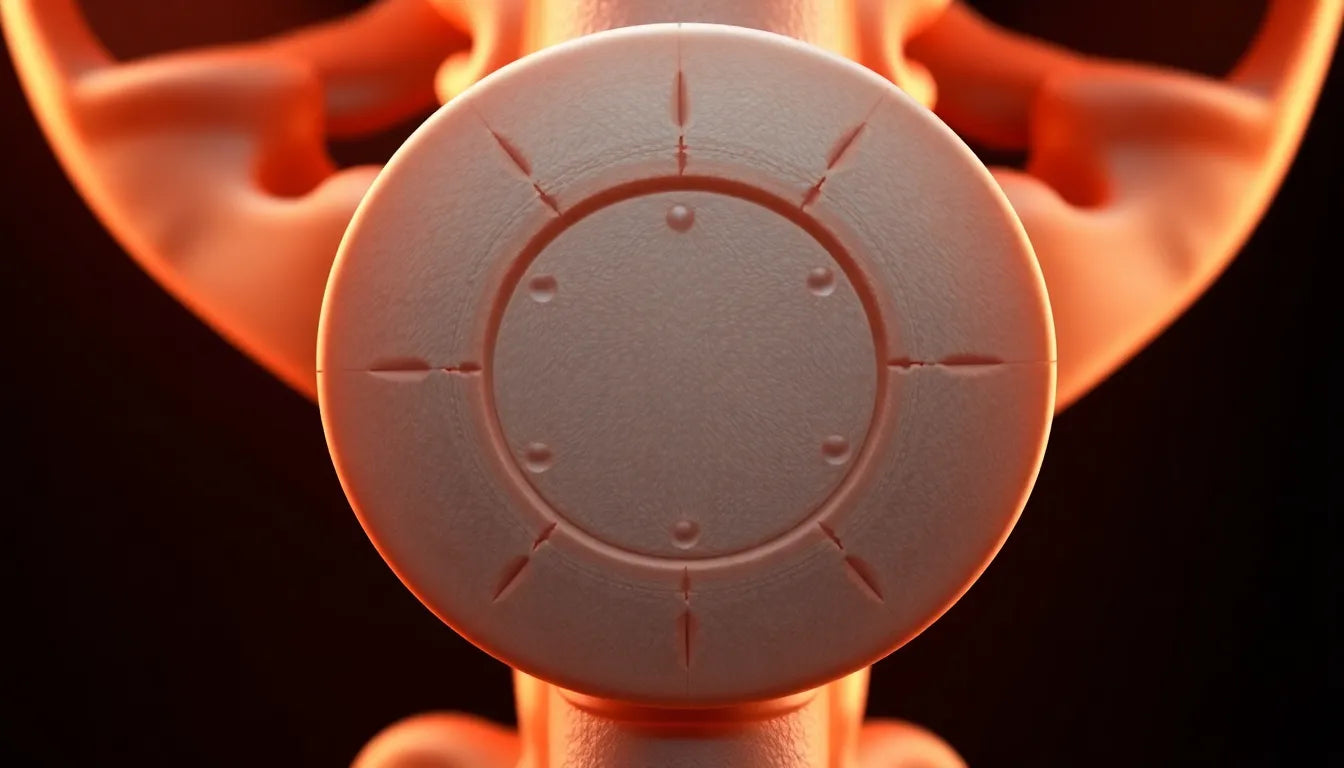Imagine a sudden, sharp pain shooting through your lower back, or a persistent, burning sensation that makes even the simplest tasks feel daunting. These are the typical sensations associated with a herniated disc in the back. The discomfort can range from a mild annoyance to a debilitating pain that disrupts daily life, making activities like sitting at a desk or enjoying a leisurely walk seem almost impossible. This unsettling feeling of pins and needles can leave you wondering what exactly is happening within your spine.
Understanding the importance of early recognition
Recognizing the symptoms of a herniated disc early is crucial for effective management and prevention of further complications. The spine is a complex structure, and any disruption in its function can have significant impacts on overall health and mobility. By identifying the signs early, individuals can seek appropriate medical advice and begin treatment strategies that may include physical therapy, lifestyle adjustments, or other interventions to alleviate pain and prevent the condition from worsening.
What to expect in this blog
In this blog, we will delve deeper into the sensations and symptoms associated with a herniated disc. You'll find a detailed breakdown of the common symptoms, such as localized back pain, radiating pain often referred to as sciatica, numbness, tingling, and muscle weakness. We will also explore potential causes and discuss when it is essential to seek medical advice. Understanding these elements can empower you to take proactive steps in managing your spinal health and improving your quality of life.
Localized back pain: the first sign of trouble
One of the earliest signs of a herniated disc is localized back pain, which often starts as a mild discomfort but can escalate into a sharp or burning sensation. This pain typically centers around the area of the affected disc, making it distinct from other types of back pain, such as muscular strain. Unlike general back discomfort, which might feel more diffuse or achy, the pain from a herniated disc is often more intense and focused. This sharp pain can significantly impact daily activities, from bending over to pick up an item to simply standing up after sitting for a prolonged period.
Radiating pain: understanding sciatica
As the condition progresses, the pain may not remain localized. Instead, it can radiate from the lower back through the buttocks and down the legs, a phenomenon commonly known as sciatica. This occurs when the herniated disc presses on the nerve roots, causing pain to travel along the path of the sciatic nerve. The sensation might be described as a shooting pain that can extend all the way to the foot, and it often worsens with prolonged sitting or sudden movements. A helpful visual aid is to imagine a line of pain tracing from the lower back down the leg, highlighting the nerve's path.
Numbness and tingling: the pins and needles sensation
Another common symptom of a herniated disc is numbness and tingling. Often described as a "pins and needles" sensation, these feelings typically follow the same path as the radiating pain. When the disc impinges on a nerve, it can disrupt normal nerve function, resulting in these unusual sensations. It’s important to watch for these symptoms, as they indicate nerve involvement and can guide healthcare professionals in diagnosing the condition. Creating a mental checklist of symptoms like numbness in specific areas can be a useful tool for discussions with your doctor.
Muscle weakness: a surprising consequence
In addition to pain and sensory changes, a herniated disc can also lead to muscle weakness. This is particularly noticeable in the leg or foot, where it might manifest as difficulty lifting objects, stumbling, or even a noticeable drop in foot strength. When the cervical spine is involved, grip strength in the hands can be affected. This muscle weakness arises because the nerves that control muscle movement are compromised, leading to a reduction in their ability to function properly. Recognizing these signs early can be crucial in preventing further deterioration.
Movement and symptom exacerbation
Individuals with a herniated disc often find that certain movements or positions can exacerbate their symptoms. Activities such as sitting, standing for prolonged periods, coughing, or sneezing can increase pressure on the spinal column, intensifying the pain. For instance, sitting at a desk for extended periods might cause the pain to flare up, or a sudden sneeze could send a sharp jolt of pain through the back. Understanding these triggers is essential for managing the condition effectively, as it allows individuals to modify their activities and adopt postures that minimize discomfort.
In conclusion, recognizing and understanding the sensations associated with a herniated disc is vital for effective management and treatment. By being aware of the symptoms, from localized pain to radiating sciatica, numbness, tingling, and muscle weakness, individuals can take proactive steps to seek medical advice and implement strategies to alleviate pain. Early intervention can make a significant difference in preventing further complications and improving overall quality of life.
Recognizing rare and severe symptoms
While many symptoms of a herniated disc are manageable with appropriate care, some signs require immediate medical attention. Rare but severe symptoms include loss of bowel or bladder control, known as cauda equina syndrome, and significant motor deficits. These symptoms indicate a serious condition that could lead to permanent damage if not addressed promptly. If you experience these symptoms, it is critical to seek emergency medical care without delay.
Distinguishing herniated disc pain from other conditions
Understanding how herniated disc pain differs from other types of back pain is essential for accurate diagnosis and treatment. Unlike muscle strain, which often results in a dull, aching pain, herniated disc pain is typically sharp and localized, with potential radiating effects. Arthritis-related pain, meanwhile, is usually associated with stiffness and aching in the joints rather than nerve-related sensations like numbness or tingling. A comparison table can help highlight these differences:
| Condition | Common Symptoms |
|---|---|
| Herniated Disc | Sharp, burning pain, radiating sciatica, numbness, tingling, muscle weakness |
| Muscle Strain | Dull, aching pain, localized muscle soreness |
| Arthritis | Joint stiffness, aching, swelling |
Conclusion: Taking proactive steps for spinal health
Identifying and understanding the symptoms of a herniated disc can significantly impact your ability to manage and treat the condition effectively. From recognizing localized pain and sciatica to monitoring for numbness, tingling, and muscle weakness, being informed empowers you to seek timely medical advice. Remember, early intervention is key to preventing further complications and improving your quality of life. Always consult with healthcare professionals to ensure you receive the most appropriate care for your condition.
Frequently Asked Questions
What does a herniated disc feel like at first?
A herniated disc often begins with mild discomfort in the back, which can progress to sharp, burning pain as the condition worsens.
Can a herniated disc heal on its own?
In some cases, a herniated disc may improve over time with conservative treatment, such as physical therapy and rest. However, more severe cases might require medical intervention.
When should I see a doctor for back pain?
If your back pain persists, worsens, or is accompanied by symptoms such as numbness, weakness, or loss of bladder or bowel control, it is important to seek medical advice promptly.
How is a herniated disc diagnosed?
Diagnosis of a herniated disc typically involves a physical examination and imaging tests, such as MRI or CT scans, to confirm the presence and extent of the herniation.
What treatments are available for a herniated disc?
Treatment options for a herniated disc range from conservative approaches like physical therapy and medications to more invasive procedures, such as surgery, depending on the severity of the condition.
Sources
- NewYork-Presbyterian. "Herniated Disc Symptoms."
- Harvard Health. "Understanding Herniated Disc Symptoms."
- Main Line Spine. "Symptoms of a Herniated Disc."
- Johns Hopkins Medicine. "Lumbar Disc Disease: Symptoms and Treatment."
- StatPearls/NCBI. "Herniated Disc."
- American Family Physician. "Diagnosis and Treatment of Acute Low Back Pain."























